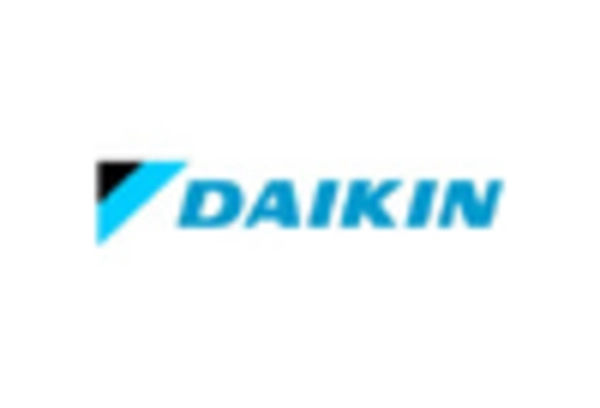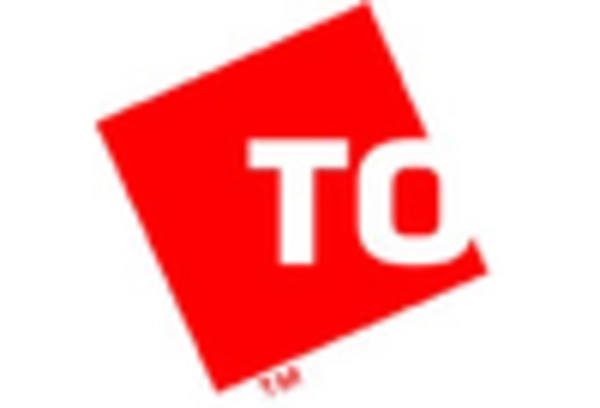Focus on Indoor Air Quality
The growing awareness of indoor air quality (IAQ) issues is influencing the vrf system market, as consumers and businesses seek solutions that enhance air quality while maintaining energy efficiency. VRF systems, with their ability to provide precise temperature control and ventilation, are increasingly recognized for their potential to improve IAQ. This trend is particularly relevant in the wake of heightened health concerns, leading to a greater emphasis on HVAC systems that can filter and circulate clean air. The market for air quality improvement solutions is expected to grow by 15% over the next few years, indicating a strong alignment with the capabilities of VRF technology. As such, the vrf system market is likely to see increased adoption driven by this focus on healthier indoor environments.
Rising Energy Efficiency Standards
The vrf system market is experiencing a notable shift due to the increasing energy efficiency standards mandated by regulatory bodies in the US. These standards are designed to reduce energy consumption and greenhouse gas emissions, compelling manufacturers to innovate and enhance the efficiency of their products. As a result, the demand for Variable Refrigerant Flow (VRF) systems, which are known for their energy-saving capabilities, is likely to rise. According to recent data, VRF systems can achieve energy savings of up to 30% compared to traditional HVAC systems. This trend not only aligns with environmental goals but also offers cost savings for consumers, thereby driving growth in the vrf system market.
Growing Demand for Smart HVAC Solutions
The vrf system market is witnessing a surge in demand for smart HVAC solutions, driven by advancements in technology and consumer preferences for automation. Smart VRF systems, equipped with IoT capabilities, allow for remote monitoring and control, enhancing user convenience and energy management. This trend is particularly relevant in commercial buildings, where energy efficiency and operational cost reduction are paramount. The integration of smart technology into VRF systems can lead to energy savings of approximately 20-25%, making them an attractive option for building owners. As the market for smart buildings expands, the vrf system market is poised for significant growth, reflecting a broader shift towards intelligent energy solutions.
Economic Growth and Investment in Infrastructure
Economic growth in the US is fostering increased investment in infrastructure, which is likely to have a positive impact on the vrf system market. As businesses expand and new projects are initiated, there is a corresponding demand for advanced HVAC solutions that offer efficiency and reliability. The construction of new commercial spaces, educational institutions, and healthcare facilities is particularly relevant, as these sectors often prioritize energy-efficient systems. Recent economic forecasts suggest a steady growth rate of 3% in the construction industry, which could translate into a heightened demand for VRF systems. This economic momentum presents a favorable environment for the vrf system market, encouraging innovation and expansion.
Increased Urbanization and Construction Activities
Urbanization in the US is driving a substantial increase in construction activities, which in turn fuels the demand for efficient HVAC systems, including VRF technology. As cities expand and new residential and commercial buildings are erected, the need for effective climate control solutions becomes critical. The vrf system market is likely to benefit from this trend, as these systems are ideal for multi-story buildings and complex layouts. Recent statistics indicate that the construction sector is projected to grow by 5% annually, further propelling the adoption of VRF systems. This growth in urban infrastructure development presents a significant opportunity for stakeholders in the vrf system market.
















Leave a Comment